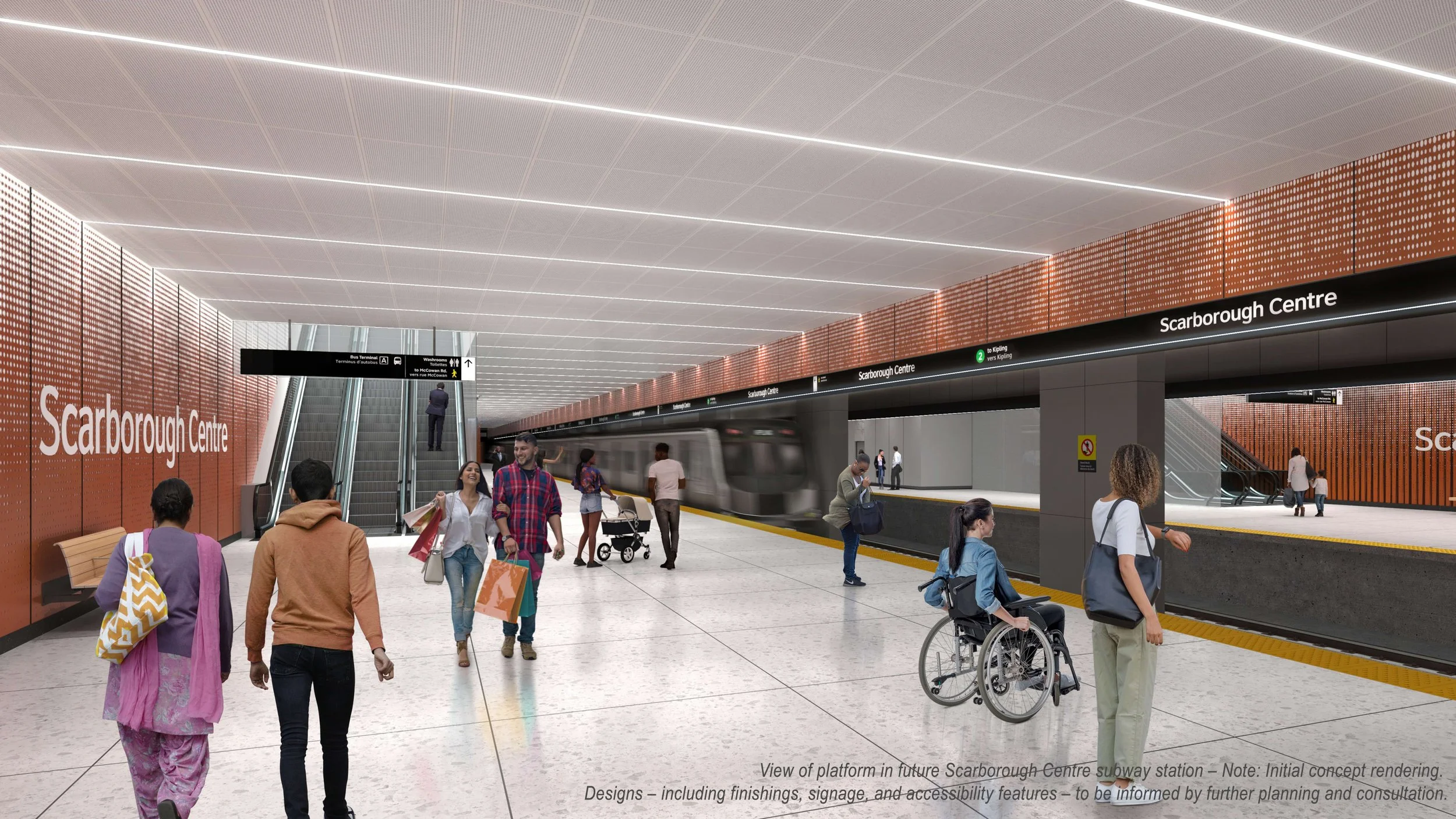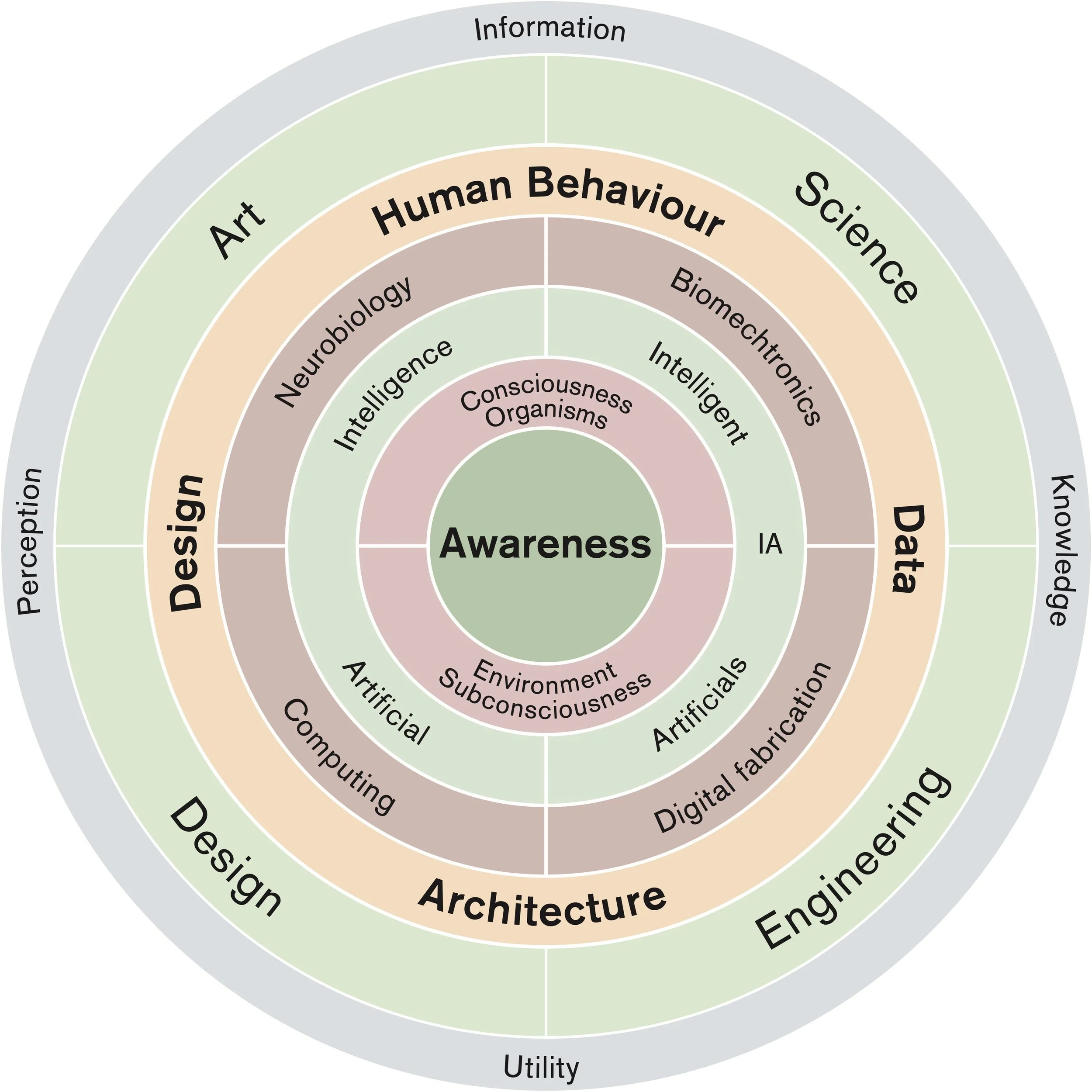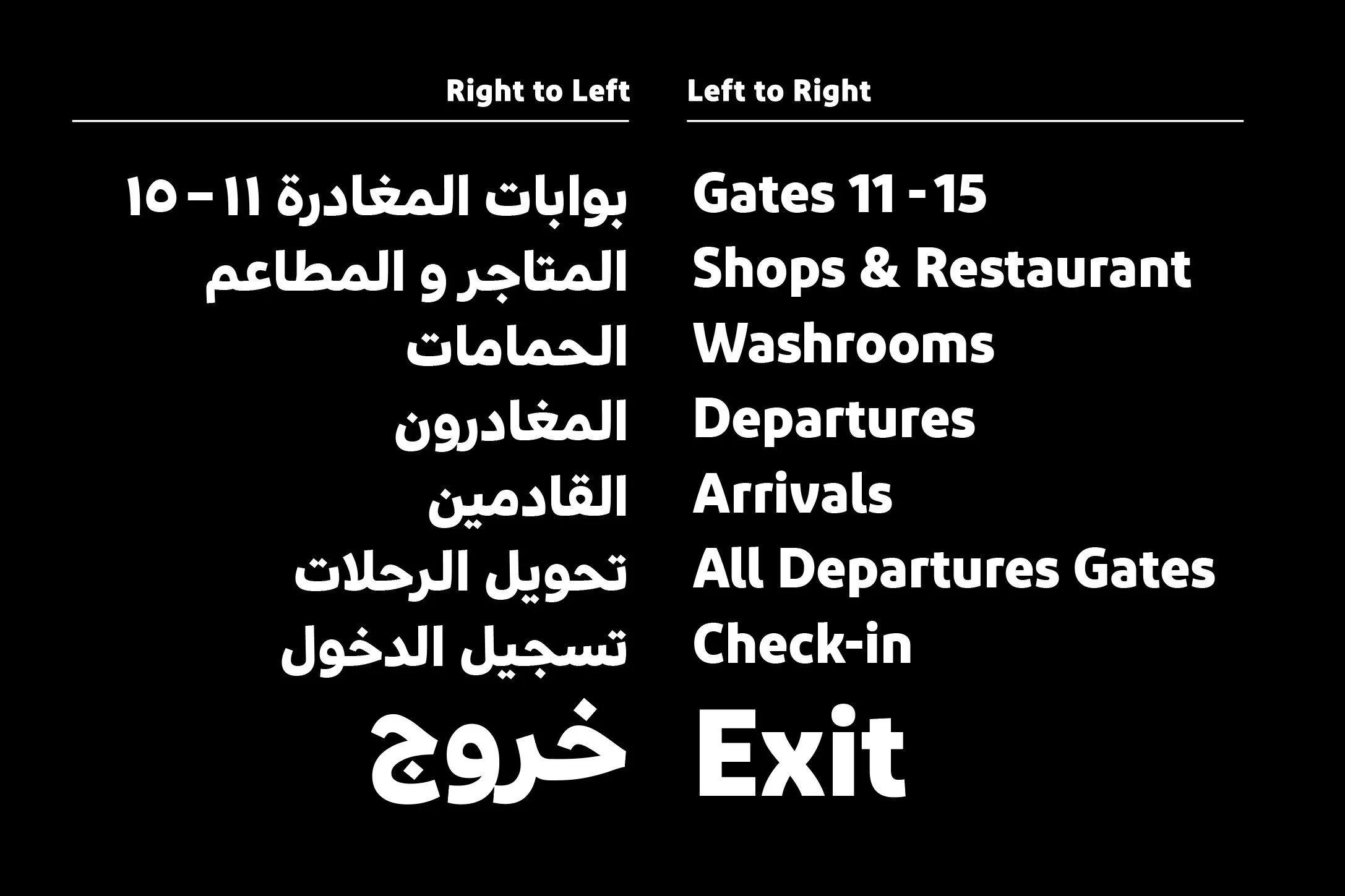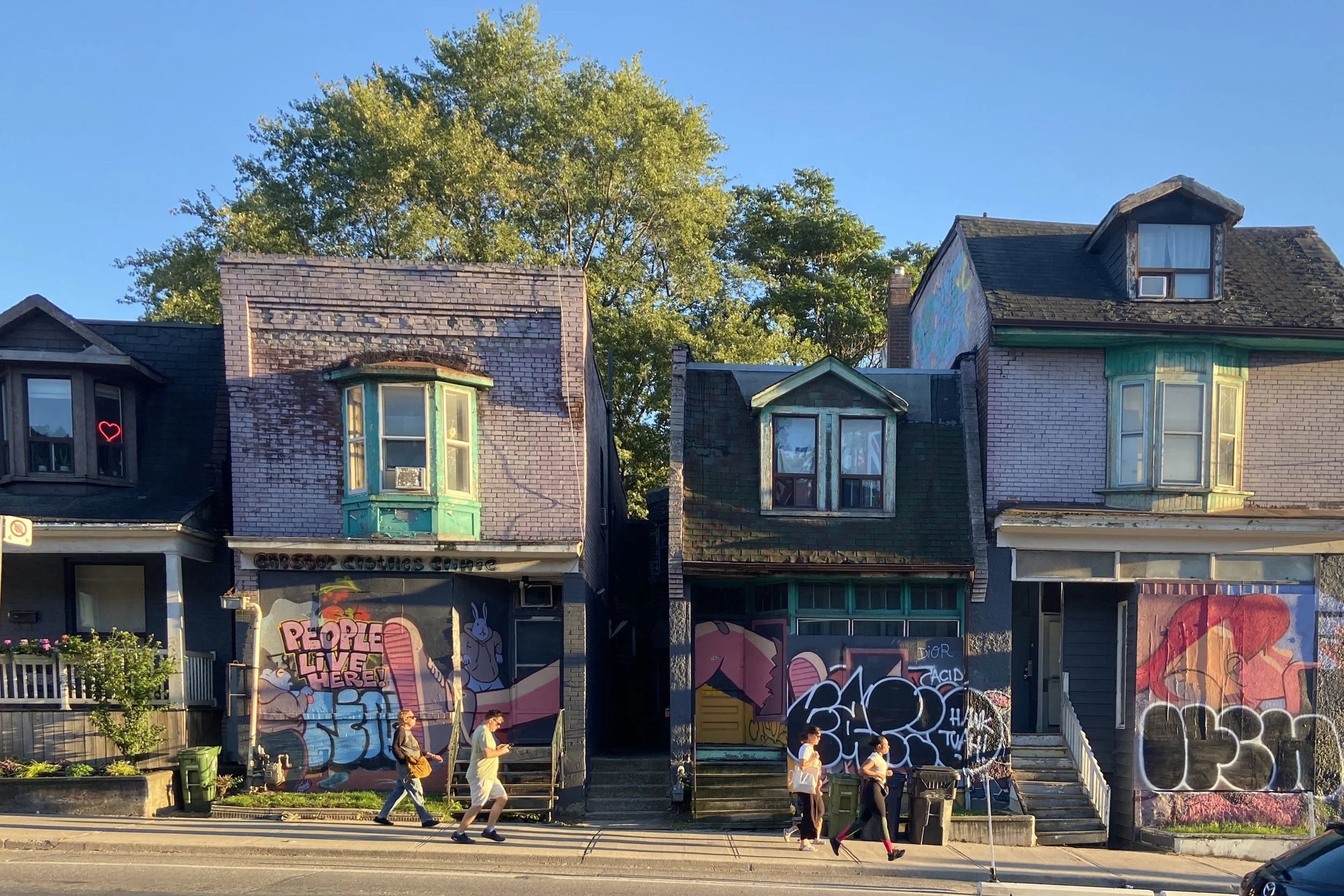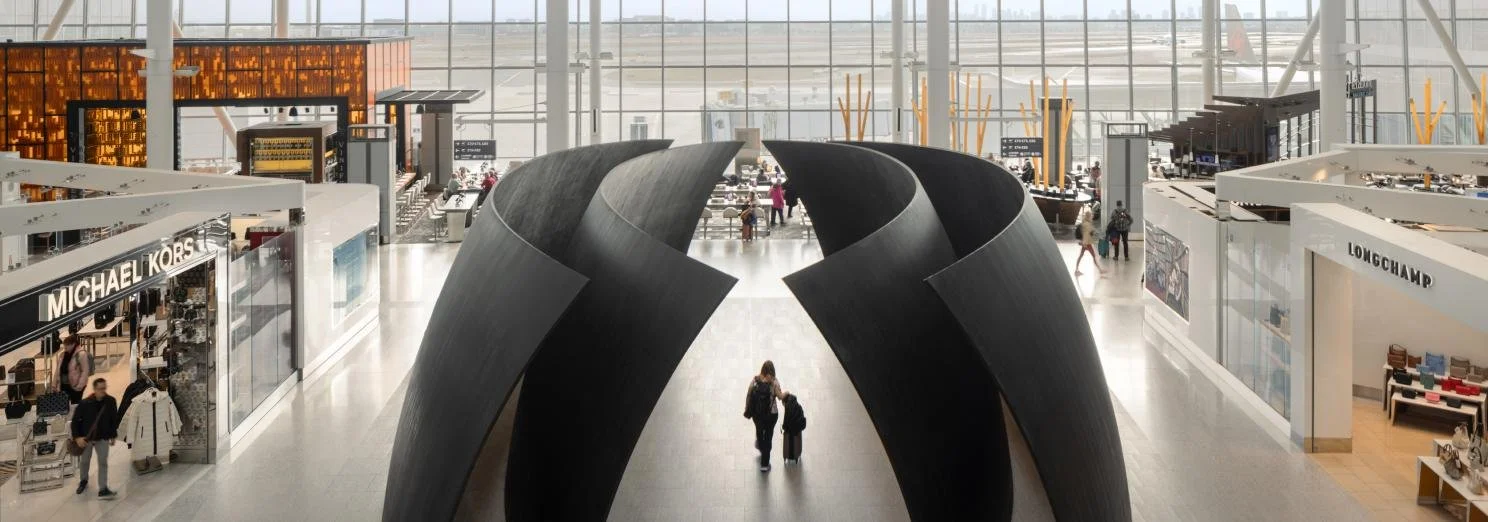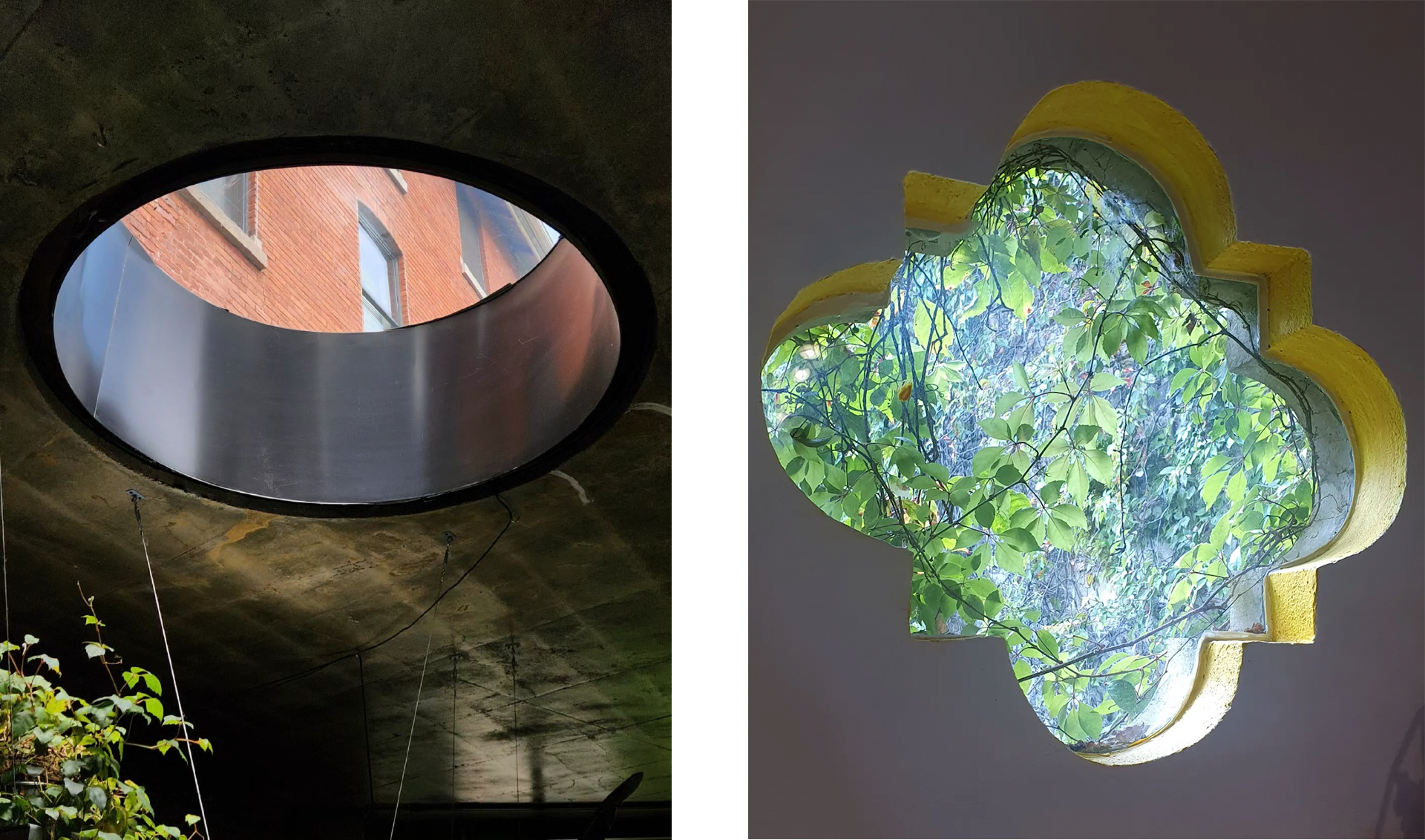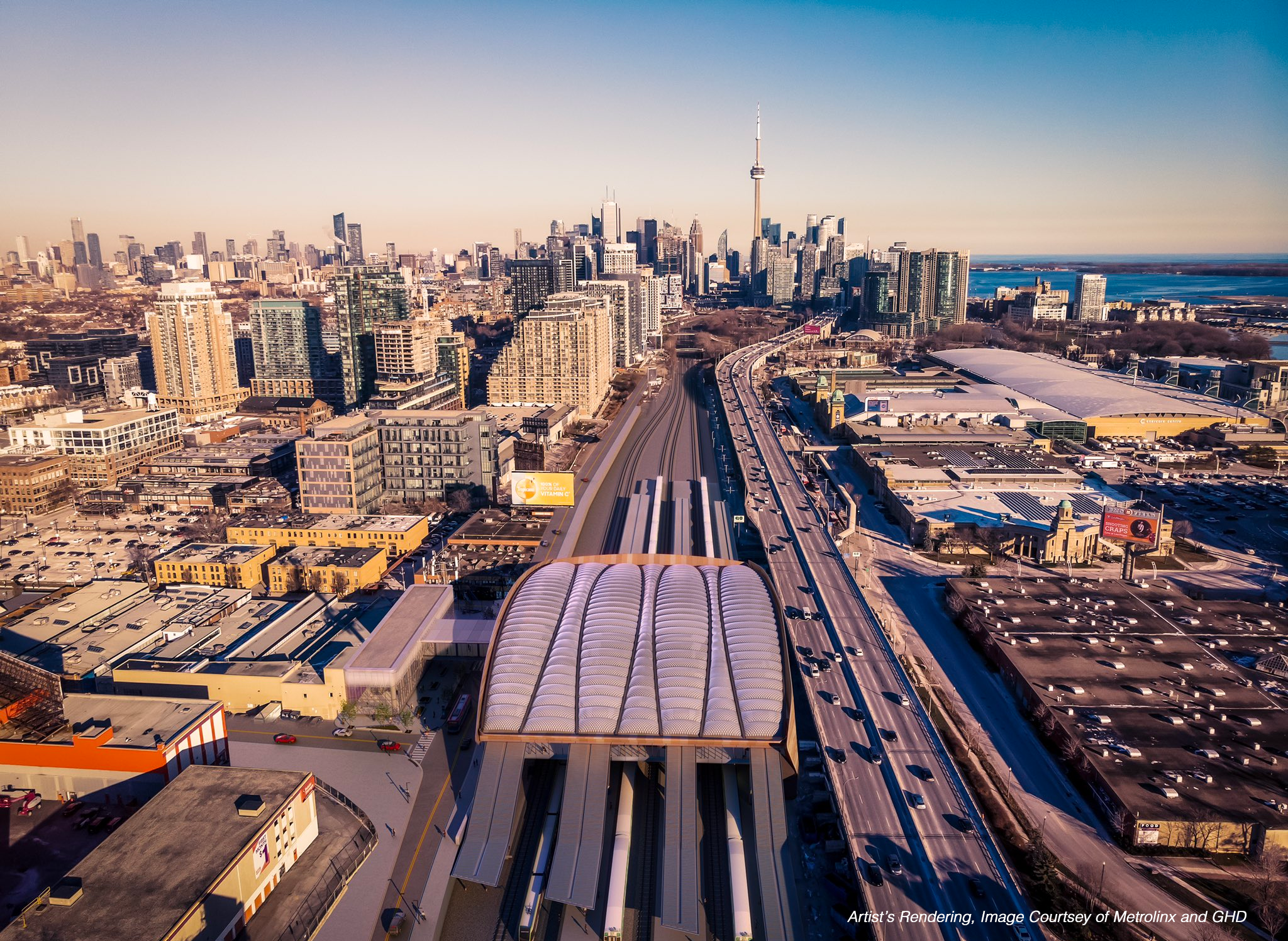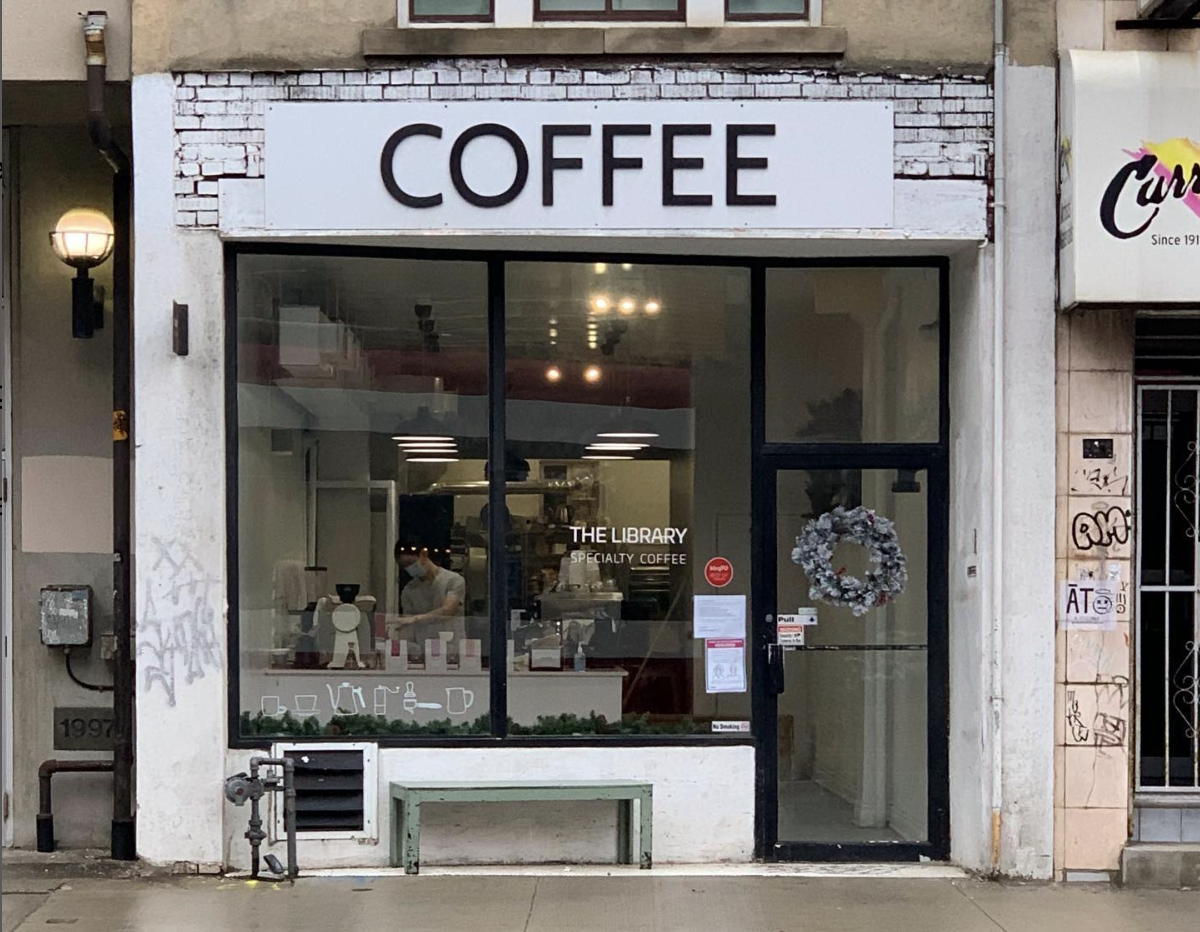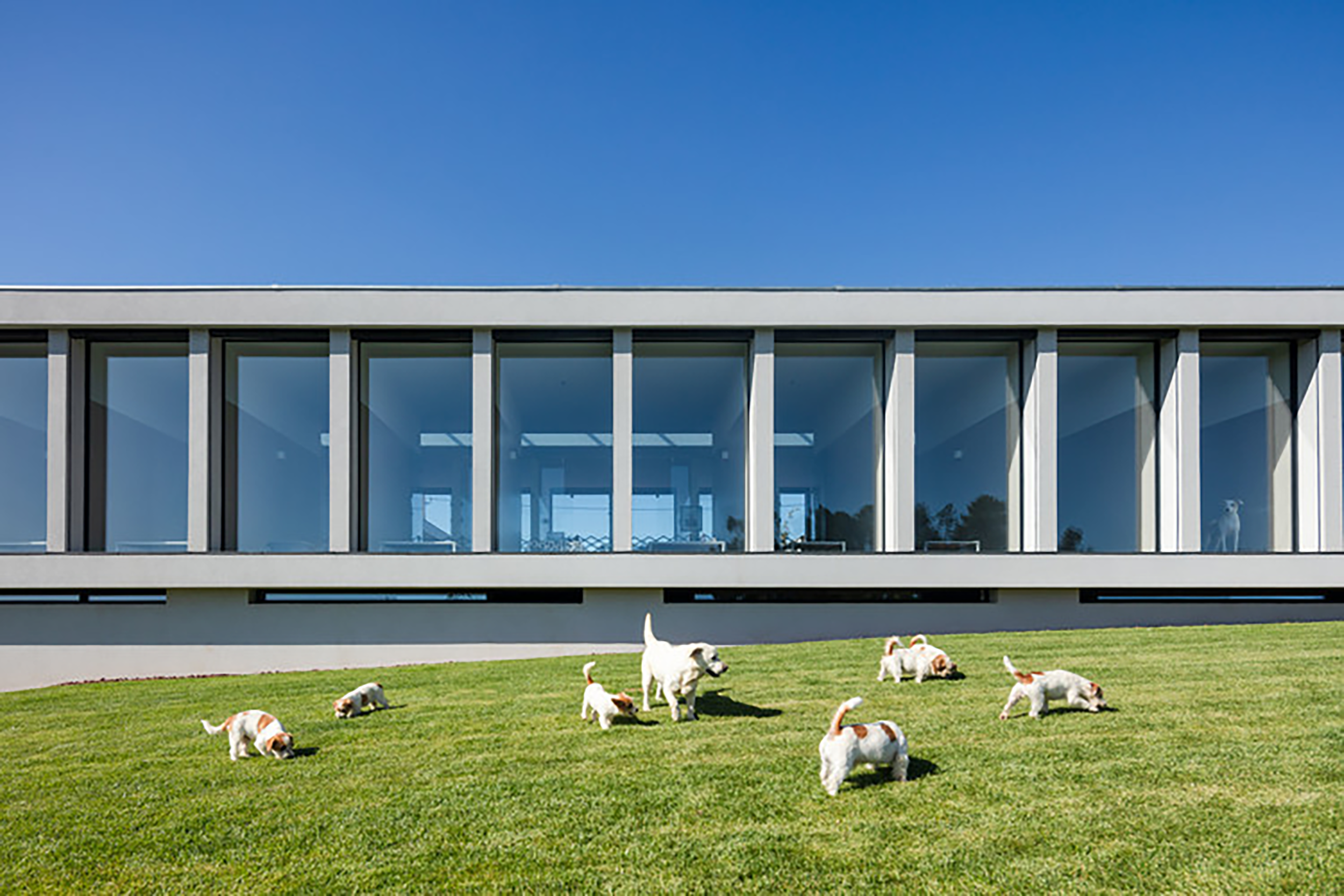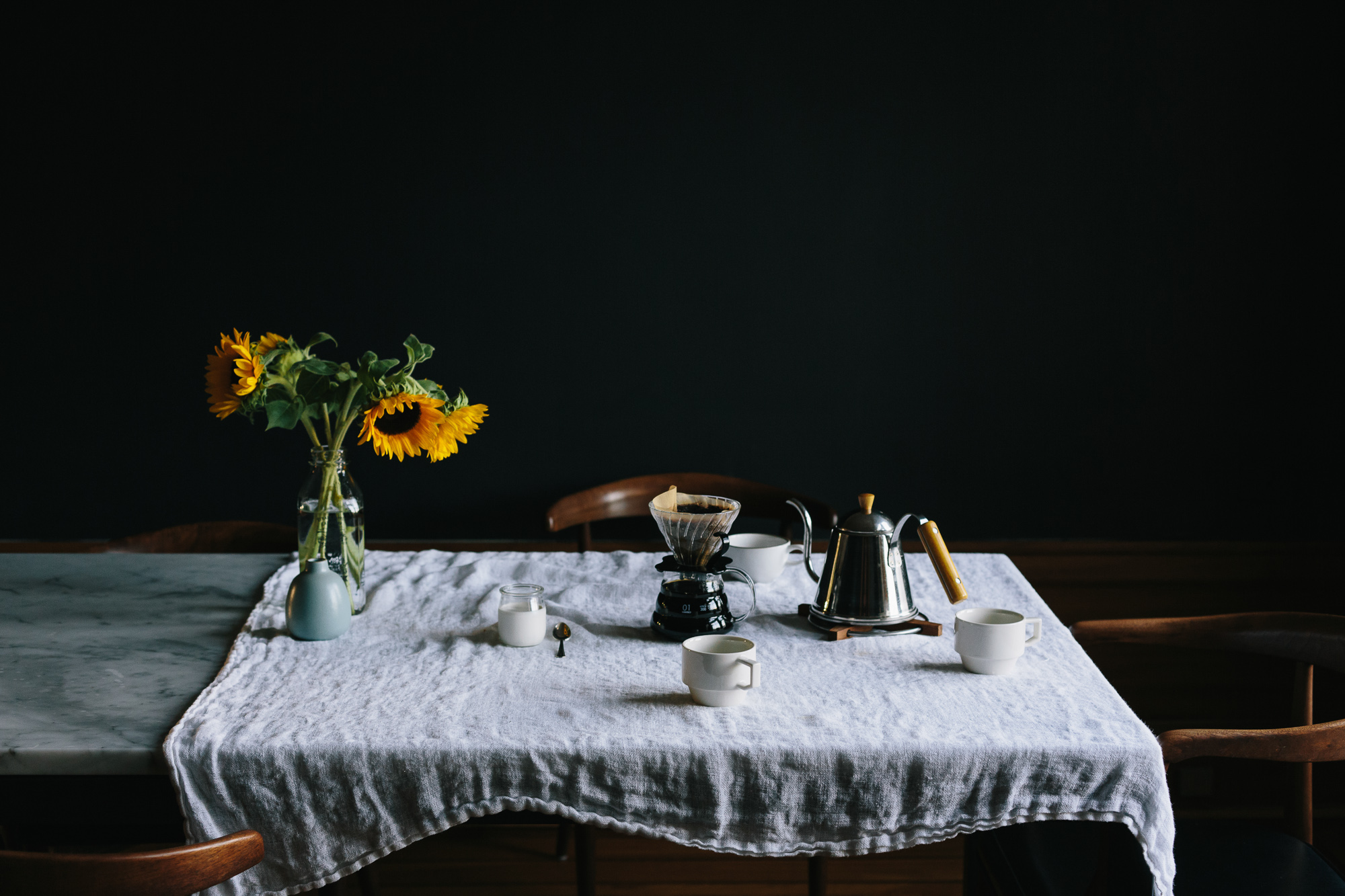
DESIGN BLOG
Thoughts
&
Musings
Making the System Work: Wayfinding for the Scarborough Subway Extension
By Karen Zwart Hielema
I love it when systems work well – when they are clear and efficient. With every sign that we place in a transit station, our goal is for a seamless passenger journey. Sometimes the architecture facilitates wayfinding, and a sign is not needed!
The DEXD team has been awarded a role as wayfinding and signage consultants as part of the larger delivery team for Scarborough Subway Extension. This marks our second large-scale transit project in Canada, and we’re thrilled to bring our expertise in human-centered design and intuitive wayfinding to this global team of experts including SENER, DIALOG, and GUNN.
A subway line is more than just a line—it’s a vital transportation system that stitches the fabric of a city and keeps our communities connected. The line will extend Toronto's Line 2 subway by 7.8 km, connecting with more than six transit options across the city. This expansion will replace the Scarborough RT (Line 3) and help reduce travel times while improving access to jobs, schools, and other destinations in Toronto. An image can speak a thousand words, but there are numbers that carry deep meaning. Consider the impact this line will have:
Ridership: 105,000 daily boardings
Increase in transit use: 52,000 daily
People within walking distance: 38,000
Access to jobs: 34,000
Annual reduction in greenhouse gas emissions: 10,000 tonnes
Delivering large-scale, complex projects can sometimes make it easy to lose sight of the broader importance of our work as we navigate through daily tasks, submissions, and technical reviews. But it’s important to remind ourselves that at the heart of every professional involved in a public project is a passion for doing good for the community. It’s about working toward the mission of creating collective joy and building spaces where everyone’s quality of life improves.
That’s why, with every sign we place in the subway systems, we are one step closer to fulfilling the mission of our company: creating spaces that enhance people’s lives.
Congratulations, DEXD team!
What Does Awareness mean?
By Gelare Danaie
Our company's name is Danaie Experience Design (DEXD). Danaie, which means “awareness” in Farsi, is my family name. I used it for the company name because, to me, it means more than just a family name.
So, what does awareness mean for me?
The most important lesson I learned in architecture school was to look at the world from various angles, with different perspectives. The point of view is the key. Architecture is about the ability to create structures and compositions that don’t exist. Architectural education is about trying to make sense of the built environment — elements that compose a system of materials, forms, and spaces, but also the flow of people.
Later on, as I continued my education, I learned a lot about the other materials involved in creating a place — feelings, senses, connections to stories, and emotions. I learned about designing with all senses: light, smell, and texture. I built my practice around experience design because this is what I believe true architecture is all about.
When I write a sketch for my story or design a gate lounge for an airport, I first think about the point of view—who is talking, who I am designing for. What are they feeling? What are they looking at? What is my customer doing at the airport? Why are they traveling? Then, I think of the layers — all the components that create a space: forms, structures, materials, and senses.
Composing a space is similar to composing a story. Storytelling methods are changing so should creating spaces. In an ever-changing world, where understanding of our surroundings is evolving rapidly with new technologies, knowledge, and human experiences, we need to be open to exploring all the ingredients that create space. DEXD’s point of view is that of an explorer — someone aware of the complexities of design, human behavior, and data. Such point of view is essential in creating the type of architecture that works for our complex age.
It goes back to the idea of awareness.
Five years into practice, we have grown the company from a desk in our backyard shed to a mid-sized design firm in Toronto, with a new office established this year in New York and opportunities to work globally. We haven’t “arrived” — there is no arrival. I know we are in the infinite game. What excites me is the process, the journey of creating something new from scratch. Success is in the journey, and the vision is deeper, more complex; we want to create places that nourish humanity, inspire creativity, and connect communities.
Inspired by the Neri Oxman Mission statement, the wheel of awareness, has been modified to include our thinking between the Art, Science, Design and Data and connection with Human Behaviour design.
An Airport's Sense of Place
By Bianca Weeko Martin
The airport is a city within a city; they are the places where passengers first come in contact with their destinations, an "age-old legacy reminiscent of the 'entrance gate' of walled cities." The airport for me personally has been a subject of fascination ever since my family immigrated from Indonesia, and my childhood became fragmented into frequent visits to airports in Canada and across Southeast Asia.
One of the things we were tasked with for an airport revitalization project was to equip the main architects, working out of New York City, with a deep and granular understanding of Toronto's unique "sense of place." A set of clearly defined concepts would inform anyone's understanding of a major transit hub and its needs and requirements. And, in the not-so-distant future, it could provide the guidelines for a future arts program. With such a task in mind, my day-to-day experience of life in Toronto was brought into a certain focus, shining light on public artworks and exhibitions that spoke to something that I could call uniquely Toronto.
Seeing the balloon-like art installations at Waterworks Food Hall made me think of the possibility in a blank canvas, offered to local artists and distributed across an airport's new gate lounges. What shape could they take?
Finding myself in a room of multichromatic mirrors at the Aga Khan Museum inspired me to consider the power and versatility of a simple reflection.
And at the AGO, where the late Filipina artist Pacita Abad was having her big moment, I saw a series of large textile works that expressed diversity in unconventional ways—each panel presenting a fictional character that assembled multiple mythologies, representing a single continent. These had been formerly installed at a train station in Washington, DC.
We shared these thoughts, among other ideas, at a brainstorming session at the DEXD offices on November 8, 2024, where we invited local artists such as Zahra Saleki and artist duo Blue Republic to lunch. We exchanged beautiful sentiments ranging from the abundance of water, an appetite for the future, and the wide-ranging experience of immigrating to and settling in Canada. One of the most poignant takeaways for me was a full reframing of the concept of "diversity," which we so readily associate with Toronto. Yes, Toronto's multiculturalism is profoundly special, but what does it really mean? How would an art piece about diversity function in a place that is as intrinsically diverse as an airport?
Instead of showing a representational portrait of diversity, an artistic intervention within the space of an airport might strive towards mirroring the diversity of passengers back towards themselves: a moment of self-awareness. After all, these are passengers coming from hundreds of different cities of origin, arriving at yet-unknown destinations—considered together, they are in constant motion on any given day. A million individuals with unfinished stories pausing momentarily in the transitory space of the airport.
What will be the last thing they remember before the moment of takeoff?
Typographic Matchmaking
Bridging Arabic and Latin Scripts in the Gulf Cooperation Council (GCC) Region
By Majid Abbasi,
Edited by Suzan Mecitoglu
Typography is more than just letters on a page; it is a tool for communication, navigation, and inclusivity. In the Gulf Cooperation Council (GCC) Region, where Arabic and Latin scripts coexist, designing effective bilingual wayfinding systems is both aesthetic and functional. Each script presents unique challenges, from differing alphabets to the opposite writing directions of Arabic (Right-to-Left) and Latin (Left-to-Right). Addressing these complexities is crucial to fostering inclusivity and accessibility.
Thoughtful integration of Latin script with Arabic creates a harmonious visual system that bridges communication gaps and ensures effective bilingual communication for residents and visitors alike.
Wayfinding systems in the GCC Region must cater to both Arabic and Latin readers, and the contrasting directional flows of the two scripts require careful design considerations. Type size, alignment, and spacing need to be adjusted to ensure readability without compromising the aesthetics of either script. When these elements are not thoughtfully addressed, mismatched or poorly designed typefaces can disrupt the flow of navigation, create visual dissonance, and hinder accessibility in public spaces like airports, shopping centers, and transportation hubs.
This is why typographic matchmaking—harmonizing Arabic and Latin scripts—is critical. Typography is not just about aesthetics; it is about creating connections, improving accessibility, and enhancing user experience. By prioritizing consistency and clarity, designers can deliver wayfinding systems that meet the needs of a diverse audience.
At DEXD, we understand these challenges. Our team of experts in Arabic and Latin typography will lead the way in designing bilingual wayfinding systems tailored to the unique needs of the GCC Region. To further advance this field, we are proud to announce the creation of a professional panel dedicated to typographic matchmaking. Through this initiative, we aim to share insights, set standards, and foster collaboration among designers and typographers across the region.
By addressing the challenges of combining Arabic and Latin scripts, we can ensure that wayfinding systems in the GCC Region are not only functional but also inclusive and beautiful. Together, we can design for a future that connects people and cultures through thoughtful, innovative typography.
People Live Here
By Daniel Puppin
If the common Torontonian knew just how much cultural loss our architectural cityscape has faced over the last 75 years, I’m sure they’d dwell on it for at least a few moments before carrying on with their day. I tend to dwell on it often – what was, what could have been, and most importantly, what we are becoming.
When asked, "What does this city need?" a typically agreed-upon response is more development - more housing, more infrastructure, more retail. While such a response is not entirely wrong, we won't actually improve this city unless these ambitions are executed thoughtfully and humanistically. The mid-century urban renewal era reminds us that growth without regard for community often leads to loss. Still, we see echoes of those same practices today, where in the name of 'density' we replace entire blocks of unique, individual units with obstructive, exclusive, and obtrusive towers. This undermines the character of the community, the pedestrian experience, and our meaningful interactions with the built environment.
Humanity has built effectively dense, livable, adaptable, beautiful cities for a good millennium prior to this modern trend, and Toronto was once one of them. Density is important, but it is often implemented ineffectively or used as a disingenuous excuse in our current context. Density doesn’t just mean building taller structures where shorter ones once stood; it also means building into the space between spaces or onto the space above spaces, thus forming new spatial dynamics through adaptive reuse and creative solutions. Flat, characterless, repetitive, multi-story boxes often outright replace iconic and significant locations, such as Honest Ed’s and the surrounding Mirvish Village. They erase rows of Victorian shopfronts, where people once lived, explored, and conducted commerce. Or they buy out the beloved standalone burger joint that served as an affordable community staple for decades. Toronto desperately needs culture, not just condos. Our culture deteriorates with every swing of the wrecking ball, with every strongarm against the common citizen, with every stacking of another uninteresting pre-cast slab or synthetic brick panel.
People find joy in the ability to explore the nooks and crannies, to traverse the streets and laneways organically, to be enamoured by a beautiful façade, an extravagant display of lights, or a small business within an established and vibrant community. We have stifled, and continue to stifle, these moments of fluidity and wanderlust.
To be clear, I am not insinuating that we shouldn’t build towers, rather that we should diligently prioritize the wheres, whys, and hows when we do it.
Architecture is the human habitat, it holds powerful influence over our psyche, our mood, our outlook. As designers, it is our responsibility to scrutinize shortsighted city-building practices, keeping these critiques in the back of our minds to avoid repeating the same mistakes of the past. It is of the utmost importance that our city planning allows room for whimsy and charm, that it respects the history, culture, and style of the spaces it seeks to modify, as well as the humanity of the commoner who dwells within. After all, people live here.
Why do I love airport design?
By Gelare Danaie
I’ve been in the business of designing airports, train stations, and subways for a long time now. I guess the reason I chose this career path is that from a young age, I’ve been passionate about flying, traveling, and transportation—or better yet, transformation. Guess what? I used to paraglide in my twenties! But when I think more deeply, I can find other reasons for my passion for airports.
#1 Emotional design
I believe airports are emotional places. From the moment we start our journey, we are both excited and stressed. We think about what can go wrong and dream of arriving at our destination; joy and panic are intertwined. Remember, we are still the same species that weren’t meant to fly. Flying is transformational.
#2 Time as an ingredient of design
Nowhere more than in an airport do we need to work with time—time as an ingredient in our design. What services, amenities, places, and experiences can we offer to bring joy back to air travel? How can we account for the ever-changing nature of airports and design something extraordinary yet flexible? In the aviation world, nothing stays the same, even in a year, let alone over the timeline of a project. The challenge is to consider time as one of the key ingredients of design.
#3 Gateway
Airports are the gateway to a place, forever associated in people’s memories as the first impression of a location. We need to find and design that character. Our team at DEXD is part of the consulting group for Pearson International Airport’s Terminal 1 and Terminal 3 Revitalization Program. Our design mandate is to create a space that is “Local and Inspiring,” reflecting the character of the region we call home. We ask ourselves: what is the essence of Toronto and the Golden Horseshoe as a place?
Now, let’s put all three ingredients together: emotions, time, and character. You’ll agree with me that designing an airport is similar to writing a novel—complex and fun!
Read more about Pearson Airport Lift Program
Windows and The Seen
By Kha Den De / Lera
Edited by Cody Foo
Windows are integral part of everyday life, an essential component in every living space. But have you ever thought about their role beyond their basic functions?
As per definition, a window's function is to let light and air in and to allow one to see through. They come in various forms, however, people hardly ever pay attention to the windows themselves and only look through them.
Windows act as a façade, separating interior and exterior surroundings. At the same time, they are framing one's view, directly influencing what is seen and how it is seen. Depending on one's position in relation to the window, the gaze angle changes and so too the view from the window. One's perception of reality can be shaped by windows, as they have the power to allow or restrict one's sight - choose what to display or what to conceal.
We can think about public spaces in a similar manner. People are constantly existing in shared spaces but rarely pay close attention to the surroundings. As designers and planners, we shape public spaces and form peoples outlook on them. Even if our placemaking efforts might not seem visible at a glance, people's positive experience is the greatest proof of our 'invisible' intervention.
For example, some of the upcoming Ontario Line South subway stations are reinstating heritage façades which comes with updating the original facade's design features, including the windows. While some of those windows will continue to serve their function, others will be covered to fuse with the walls. The choice behind keeping a window open or concealing it translates into design choice of shaping what is seen and unseen to a space user.
"Mission: Possible"
By Gelare Danaie
After 20+ years in architectural practice, traveling, experiencing life, and observing the connections between people and places, I realized what truly important to me is to be able to impact everyday life by designing spaces for people, and to challenge the top down approach of architectural practice.
Although the experiential design layer is the first impression for people, harmonizing and managing its elements is usually a tricky task for architects. Having the experience of being an architect in charge of managing the consultants in a large scale project, I realized there is a gap in the practice of overseeing all the public facing elements that include wayfinding, environmental graphic design, digital communication, advertising, activation, and art.
This is how DEXD came to life. I decided to create a platform that would combine architectural planning and experiential elements in complex environments. Our first major contract was Metrolinx Subway Station Architecture Design Standard. The mandate was to prepare a design standard for all the subway stations within GTHA area, the most important project being Ontario Line South!
While working with Metrolinx back in 2020 and as we were mapping all the architectural typologies of stations for the future line, I opened my personal notebook and wrote down my vision with a sharpie pen: «DEXD will be the Wayfinding designer for the line!»
Fast forward to 2023, my phone rang on a Friday afternoon in August and I got the news that we were chosen as the Wayfinding consultant for all Ontario Line South stations.
I believe business and life are similar, there are lots of ups and downs, wins and losses, but if you have a vision, you share your true values, and put all your heart in what you do, there is a big chance you will achieve what you want.
Attempts to Establish Myself in A Local Community
By Kha Den De / Lera
Have you ever thought about getting involved in your local community? - I certainly have.
After adapting to a new city and establishing a good friend group, I made it my next goal to become a part of a neighbourhood community. I've always wanted to be a regular at a shop, or be friends with a neighbour - I wanted to experience that feeling of belonging.
My first attempts took place when I moved to a new area. I started by exploring the surroundings to find places I gravitate to. Eventually, I discovered a couple of local businesses, including THE coffee shop. While I am happy to report that I started having friendly conversations with owners and employees of several local spots, the closest relationship I've established is with a barista in now my favourite cafe.
An occurrence that prompted me to write this post happened last week. Coffee in that place is always excellent, however, THE barista is particularly good at making matcha. For a bit over a year, I've been telling all of my friends that THE barista is making the best matcha latte in the city. So I came there with my friend, we ordered matcha and were chatting with THE barista. Meanwhile, another employee was going to start preparing our drinks, but THE barista stopped them saying: "I'll do it, she is my customer."
Being called 'my customer' felt really heartwarming. I suddenly realized that I was not the only one who considered this friendly relationship special. As discussed in my previous post 'People and Places', the community is what makes you feel at home, since being part of the community brings social fulfillment and simple everyday joy.
Like this coffee shop, any place can create a canvas for joy. So when designing a district or a public space, we should never forget about its occupants and what would make that space special for them.
A Eulogy to the Scarborough RT
By Bianca Weeko Martin
The Line 3 Scarborough RT train derailed on July 24, 2023, terminating service prematurely. Growing up in Scarborough, I saw the RT as something like a geographic meter stick for situating myself and my home, as my family moved from our first apartment near the intermodal Kennedy Station to the farther east fringes of Malvern—past the end of the line. The news of the closure surprised and saddened me. As a tween, I enjoyed watching all the graffiti tags and pieces on the walls flashing by on the tracks, and I felt a sense of unspoken comfort on the vehicles seeing the sleepy faces of immigrant students, workers, and commuters, which more closely here than anywhere else in Toronto mirrored my own.
When I began middle school, I had to commute home by myself, which gave me the pluck of a 12 year-old taking on the long commute from Yonge and Sheppard to Scarborough on her own everyday. I have unfortunate memories of waiting at bus terminals without earphones and transferring buses in the cold, but I never felt danger. I do not take for granted that a single bus fare could cover 20 kilometers of travel and provide me access from the inner suburbs to the city, and that this city would eventually become the crucial subject and setting of my adult days.
In architecture school, I took most of my internships abroad, and was thus able to develop a more holistic understanding of public transit with new reference points in distant places: Prague, Melbourne, New York, Mexico City, Berlin, Manila. I found the public transit system of Manila in particular more challenging than any I had encountered before, and so I felt a proportionally heightened sense of empowerment when I successfully decoded its mysteries: for example, one had to combine the metro with informal transit options like jeepneys (military vehicles repurposed into public buses) and tricycles (motorcycles fitted with extra seats) or even motorcycle taxi apps (i.e. Grab) in order to fill wide gaps in the daily commute. Indeed, I made use of active transportation. My aunt called me brave. But I recall a quote by Gustavo Petro, Mayor of Bogotá: “A developed country is not a place where the poor have cars. It's where the rich use public transportation.”
Nowadays, I find myself serendipitously working on a variety of public transit projects: customer journey mapping for new LRT lines in Toronto with DEXD; a public art plan for a transit system in Saskatoon. I have many hopes and dreams for these new and impressively designed transit lines, and I have heard the hopes and dreams of others through research and outreach sessions we have conducted within our communities. I recently came across a public art piece, ‘Masstransiscope,’ by Bill Brand installed in New York City in 1980, and wondered what something like this could look like in the city I call home. And I can't help but think back to the colourful, screeching rides of the Scarborough RT of my childhood.
Panopticons in Modern Cities
Written and Edited by Kha Den De / Lera
Do you ever feel like you are being watched?
Such feeling is probably common among those who live in big cities. It is normal to feel gazes in an open public space. However, one site that stunned me by its hidden exposure is Allen Lambert Galleria.
Allen Lambert Galleria is a multi-use public space with high people flow throughout the day.
Large open space, use of glass all over the structure, and the fact that Galleria is bordered by offices with inward looking windows make it easy to do observations from different perspectives.
Office workers can easily watch people walking down through the hallway. At the same time, pedestrians can also see those, whose workplace is next to the windows.
Glass walls allow people inside the building look at people outside, and vice versa.
The openness of common area, that follows the hallway, reveals a panoramic view for surveillance.
As a space for surveillance, Allen Lambert Galleria can be compared to Panopticon - in the atrium, people watch each other from almost everywhere. Unconscious gaze is what one experiences while being there.
While unconscious gaze is a normal occurrence in any public space, what can be done to make a space like this more intimate? It is important for people to have a choice between being exposed and having some privacy. As designers, what can we do to accommodate everyone within large-scale spaces?
Staring Out of Windows
Written and Edited by Suzan Mecitoglu
As the bus follows the familiar route, I can't help but be captivated by the subtle changes that unfold in the neighborhood outside the window. Each day, as I pass by, I notice the little transformations that, piece by piece, shape the character of this city I call home.
A new splash of color on an old building, a vibrant mural adorning a once-dull wall, or a blossoming garden in place of boring concrete – these small changes breathe life into the streets.
Watching these changes through the bus window fills me with a sense of connection to my surroundings. It reminds me that just as this neighborhood grows and evolves, so do I. With every passing day, I cherish the memories of the past while embracing the promises of the future, knowing that change is inevitable and brings new stories to this ever-changing landscape.
With each passing day, I am remined of the power of creativity and the potential for positive change. The possibilities are endless as we work together to build a dynamic city that honors the past while welcoming the promises of the future.
As architects and city dreamers, we can envision endless opportunities to make a meaningful impact on this evolving city.
How Animals Navigate and Use Wayfinding
Written and Edited by Cody Foo
Wayfinding has been a part of human navigation since people began roaming the world and expanding their territories. The ancient Greeks and Romans started using signs with symbols, rather than using the stars as was custom at the time. Polynesians mastered methods of wayfinding to explore and settle on the islands of the Pacific, many using devices such as the Marshall Islands stick chart. With these skills, some of them were even able to successfully navigate the ocean in addition to their own land.
However, wayfinding is not a human-exclusive technique for navigating, animals of all kinds use wayfinding, from bees using landmarks to find their way home, to birds and sea turtles using the Earth's magnetic field to make their annual migration. Let's look at how some of these animals move within nature.
Bees are vital to our environment given that they continually cross-pollinate crops, allowing humans to produce large amounts of food. It is said that without bees, we as humans would struggle to survive. So how do bees find honey, their hive, and their way around in general? According to Menzel et al (2005) bees use individual "orientation routes" to learn about their surroundings, and then relay this information to the other worker bees. Using elements such as the sun, distance, paths and landmarks, bees are thought to build up a kind of mind map in understanding the relation of the hive to these landmarks.
Ants are another type of insect that always seems to know where they're going; they never seem to crash into each other even when there are hundreds around, and they always seem to have a clear mission and direction. Kohler and Wehner (2005) studied desert ants and found that ants establish outbound and inbound routes, guiding them across their foraging areas. The route-based memories are acquired during the first runs from the nest. Even if the ants are displaced they can find their routes at any place and then follow them home, like human roads. Ants leave behind pheromones that can then be picked up by other members of their colony. Additionally, they can smell in two directions with their antennae and use this trait for navigational purposes.
Besides insects, there are many species of animal that use the Earth's magnetic field to navigate. While the exact method used by each animal is different (and still not totally understood by scientists), animals that are responsive to the geomagnetic field are able to orient themselves like we would with a compass. This allows them to not only find their migratory routes, but also allows predators like foxes to hunt their prey more accurately, using the geomagnetism like a range finder.
References:
Menzel, R., Greggers, U., Smith, A., Berger, S., Brandt, R., Brunke, S., Bundrock, G., Hülse, S., Plümpe, T., Schaupp, F., Schüttler, E., Stach, S., Stindt, J., Stollhoff, N., & Watzl, S. (n.d.). Honey bees navigate according to a map-like spatial memory. Proceedings of the National Academy of Sciences, 102(8), 3040–3045. https://doi.org/10.1073/pnas.0408550102
Kohler, M., & Wehner, R. (2005). Idiosyncratic route-based memories in desert ants, Melophorus bagoti: How do they interact with path-integration vectors? Neurobiology of Learning and Memory, 83(1), 1–12. https://doi.org/10.1016/j.nlm.2004.05.011
Magnetoreception | The Lohmann Lab – University of North Carolina at Chapel Hill. (n.d.). https://lohmannlab.web.unc.edu/magnetoreception/
Let's Harmonize our Buildings with Nature
Written by Suzan Mecitoglu
Edited by Kha Den De / Lera
As I walked past old houses that were about to be replaced by new ones, the words "Save Our Trees" drawn on the walls caught my attention. It reminded me of my favorite architect, Douglas Cardinal, who loved nature and believed buildings should work with nature, not against it.
Douglas Cardinal, known for nature-inspired architecture, valued his native culture, influencing his designs. His buildings blended well with the environment, emphasizing the importance of trees. The flowing shapes reflected his Indigenous heritage, showing harmony between people and surroundings.
Nowadays, there is a tendency to prioritize short-term gains over long-term sustainability. However, the incorporation of Indigenous principles into architecture has the potential to reshape our built environments. By drawing inspiration from nature and recognizing its intrinsic value, architects can create spaces that nurture societies rather than exploit them.
It's crucial to understand that nature isn't just a backdrop; it's vital for our well-being. Each tree and flower contribute to the delicate balance of life. As we advance in architecture, let's acknowledge nature's irreplaceable value.
So, let's prioritize green spaces in our designs, and cherish and protect the trees that make our world a better place. By thoughtfully integrating architecture around nature, we can build a stronger bond with the environment and live in harmony.
As I say goodbye to those homes and trees, I promise to respect nature and support the architects who share these values.
Back to Play
Written by Alisson Talancha
Edited by Kha Den De / Lera
A few days ago, a coworker brought her kid to the office, and as I saw him playing around and swinging in the hammock, I got reminded of the time my parents similarly brought me to their workplace. My parents worked in an industrial workshop space, where I got to create my little world using unplugged machines and office tool as my houses and furniture for my dolls. As a “grown-up”, I have always tried to keep this playful and imaginative part of me present with different degrees of success. So watching this kid play in the office, I couldn't help but wonder, how many adults out there would also like to play around, swing in a hammock or twirl in an office chair?
Well, turns out the answer was closer than I thought. Every day we see how movies like Barbie and Avengers bring childhood excitement to adults. Not to mention 'Disney adults' and other adults having kid-like birthday parties.
I realized most adults want to have fun and keep playing, embrace the childishness and let imagination go wild. Adulthood is not what we thought it is - it’s not just numbers, charts and grey suits. Granted, it’s a bit of that, but it’s also colours, games, fun, sparkles and whatever we decide it is.
Playing has been very important throughout my life, it inspired me to pursue design, through which I hope to bring some joy to people of all ages. It is very important to create opportunities for activation and playing in public. As people involved in the design industry, we hold a privileged position of being able to keep this idea of playfulness alive, bring it to our projects and hopefully make someone's day more joyful.
Some Thoughts on Active Transportation
Written and Edited by Kha Den De / Lera
Toronto's transit system is a hot topic for discussion that never reaches a conclusion. We have all been in a situation when the streetcar or bus is delayed by 20 minutes and when it finally comes you have to force yourself in and spend a ride squeezed among other passengers. As someone who has been living in Toronto for a while now, I find myself turning to active modes of transportation more and more, instead of using the TTC. The reasoning is that it is often faster, more enjoyable, and allows some physical activity in a world where we spend most days sitting at work or school.
By definition, active transportation means getting from one place to another using your own power and includes walking, biking, skateboarding, etc. However, the problem with Toronto in particular, is that there are numerous construction works, that often block the sidewalks, and bike lanes are simply nonexistent on many roads.
Such obstacles are often discouraging. As a casual bike user, I sometimes have to choose a half an hour streetcar ride over fifteen minutes biking trip as I am reluctant to bike on a car lane of a busy street. And that is why, I see great potential in developing a better active transportation infrastructure, especially, considering the fact that several Toronto-based initiatives like The Laneway Project and The Green Line have already started to transform underutilized laneways and alleyways into attractive alternative corridors for pedestrians and cyclists through greening and revitalization.
It is important to acknowledge that active transportation is not a viable solution for everyone. For instance, parents with young children, older adults, or differently abled individuals may opt to travel by car. Nonetheless, there is a great number of commuters like myself, who currently travel by car and public transit that could make a switch to active transportation.
Just Say Hi! What Happens in Public Transit - A Series
Written by Suzan Mecitoglu
Edited by Kha Den De / Lera
Do you frequently ride public transit with the same group of people?
Since I take the bus frequently, I see familiar faces almost every morning. Sometimes it can be awkward because you don't know how to approach a stranger or if they're willing to chat with you. It is essential to strike a balance between being friendly and respecting personal boundaries. I find that a simple and polite greeting like "Good morning" or "Hello" can be a great way to initiate conversation without being intrusive.
When I first moved to Mississauga, I asked a lady to help me make sure I was taking the right bus to get to university. After continuously seeing her throughout the next week I mastered up the courage and started talking to her. Since then, we would have small talks every morning. It created a positive atmosphere on the bus, making daily commute a more pleasant experience for both of us. During Covid we lost our connection but then crossed paths a year later, which was an unexpected but delightful event, that made me feel genuinely happy.
In a similar vein, I've struck up conversations with other commuters just because I see them every day. It is always a smile that initiates a friendly chat. The rush of getting to the destination often makes commute highly stressful and hurried so who would be against a warm informal conversation? Instead of constantly staring at our phones, I believe we could create our own commuter communities by making casual connections with people we meet throughout the course of a typical day. So the next time you're hesitant to start a conversation with a stranger, just say hello and smile. It will surprise you how much better it could make you feel!
People and Places
Written and Edited by Kha Den De / Lera
Every time I find myself in a new place far or close by, whether it is a city or simply a neighbourhood, I feel both thrill and anxiety at the same time: "I am so excited to explore! ... Please let it be fun".
Such mixed feelings are quite common because we believe in a romantic notion of instantly falling in love with a city that is portrayed in many pop-culture movies and books. In reality, however, it takes time for a person to establish connection with a place.
“Cities are, by their definition, full of strangers” - Jane Jacobs
Relationships between people and places are created by... well, other people and places! As you meet people you like and discover places you enjoy, you get more and more attached to them. These touch-points are what make a place - your place.
Hence, people and places exist in an 'eco-system' where one affects another. A good public space brings people together and allows them to connect, which subsequently leads to a creation of community. As people continue to inhabit a space, signifiers of their presence start to appear and alter the character of a space. As such, you and your community become a driving force that initiate changes in the space.
In conclusion, people and places are interconnected more than one might expect. While certain spaces alter one's perception of a place or city in general, characters of those spaces are influenced by its occupants. So if you ever feel like you are falling in love with a place, it would be a fair assumption that you somehow contributed to that place's evolution or change.
Animal Sounds and Multicultural Experience
Written by Alisson Talancha
Edited by Kha Den De / Lera
As someone who lives alone, I realized that working remotely is not all that fun. Not only you start feeling lonely but isolation also rusts your social skills. Back in February, DEXD team moved to a new office. We went from a hybrid schedule of seeing each other once every other week to sharing the space every single day from 9 to 5. Since many of us were relatively new to the company, lunch breaks were filled with extensive weather discussions and awkward staring at each other in silence.
That's when out of desperation I asked: "What do dogs say in your language?"
As a native Spanish-speaking person I always thought dogs say "wau" ("guau" in Spanish). But after starting to learn English I found out that English-speakers use "woof" to describe dog sound. This discovery made me curious, how come universal animal sounds are interpreted differently in each language?
Although this question should probably be intended to a linguist, something amazing happened when I inquired about the subject. I found out that in Turkish dogs say "hav hav," in Farsi "vak vak," in Russian "gav gav," and in Korean "meongmeong". However, the best unintended consequence of my question was that suddenly we were all engaged in a lively conversation about this silly topic, breaking the ice and allowing us to be more social.
This experience with my coworkers also made me think about how we interpret things differently depending on our backgrounds. Whether it's a fun conversation about animal sounds or a complex work subject, having various unique perspectives can be game-changing. The multicultural environment that we exist in, provides us with an extremely valuable opportunity to learn and exchange ideas, which is impossible in a different setting.
*For those who are still curious, I also discovered that roosters do not only say "kikiriki" as my Spanish-speaking mind thought, but in French, they say "cocorico," in Farsi, they say "kukuku," in Russian, they say "kukareku" and in Turkish they say "ü-ürü-üüü". Cats, however, seem to be the clearest in their diction, as in Spanish they say "Miau," in English "Meow," and in many languages, they have a similar "meow" sound.

